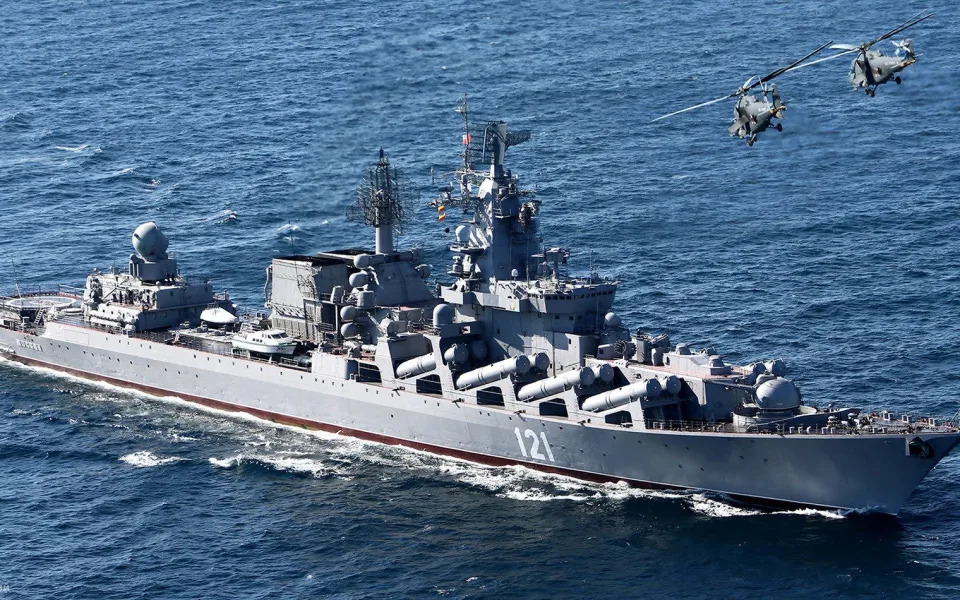The Telegraph
Without the Moskva, Russia’s Black Sea fleet is far more exposed to missiles and drones
Dr Sidharth Kaushal – April 14, 2022

The return to port of the Moskva, which is the Black Sea fleet’s flagship, has both symbolic and operational significance.
Beyond its symbolic role, it is the sole vessel in the fleet equipped with wide-area air defences in the form of the S-300F. The Moskva has thus provided air cover to other vessels during their operations, which have included coastal bombardments and amphibious feints.
In the absence of the Moskva, the fleet lacks vessels with a comparable air defence suite, and will thus find it more risky to conduct similar operations.
Though Russia has comparable ships, including two Slava Class Cruisers in the Eastern Mediterranean, it cannot replace the Moskva due to the fact that Turkey has closed access to the straits to the belligerent warships for the duration of the conflict.
Of equal note is the Neptune anti-ship system with which Ukraine claims to have hit the vessel. The R-360 anti-ship cruise missile, which is fired by the Neptune, is a derivative of the Soviet KH-35. It is capable of striking targets at reported ranges of up to 180 miles and has the capacity to fly at sea-skimming altitudes to evade radar detection.
The missile is apparently capable of using GPS guidance in tandem with inertial guidance to improve its accuracy and uses an onboard active radar seeker to detect its target in its final stages before impact.
The missile threat to ships is an old one. What is new, however, is the growing number of actors that field them. In addition to Ukraine, both Hezbollah and the Houthis have utilised older Chinese-made anti-ship cruise missiles against expensive ones in their conflicts with Israel and Saudi Arabia.
The expanding suite of tools to track targets at sea, including commercial satellite networks, open-source data and relatively cheap capabilities like drones, mean that striking maritime targets at reach is no longer something only major powers can do. Incidents such as the striking of the Moskva and the destruction of the Russian amphibious landing vessel Saratov by a Ukrainian Tochka ballistic missile while in port highlight this.
In some ways, this might be cause for celebration. Similar capabilities can be used by other targets of aggression such as Taiwan, for example. However, it may be a mistake to assume that only adversaries will be challenged by these developments, which will make theatre entry harder for all major navies, even against sub-peer opponents.
To be sure, the Moskva has certain weaknesses that a western ship might not. It lacked some of the electronic countermeasures such as the Nulka decoy, which vessels like the USS Mason used to defeat cruise missile attacks, its command and control systems may not meet western standards and its crew may have proven lacking in alertness and discipline.
However, as the sinking of HMS Sheffield should remind us, even well-trained crews can struggle to counter surprise cruise missile strikes which leave them with low warning times.
Over long campaigns, most crews will at some point be at risk of coming under attack when they are not alert. As the ability to strike vessels at sea with cruise missiles and to destroy them in port with ballistic missiles proliferates, power projection may become more difficult for all the great powers.
Dr Sidharth Kaushal is a Research Fellow at The Royal United Services Institute
